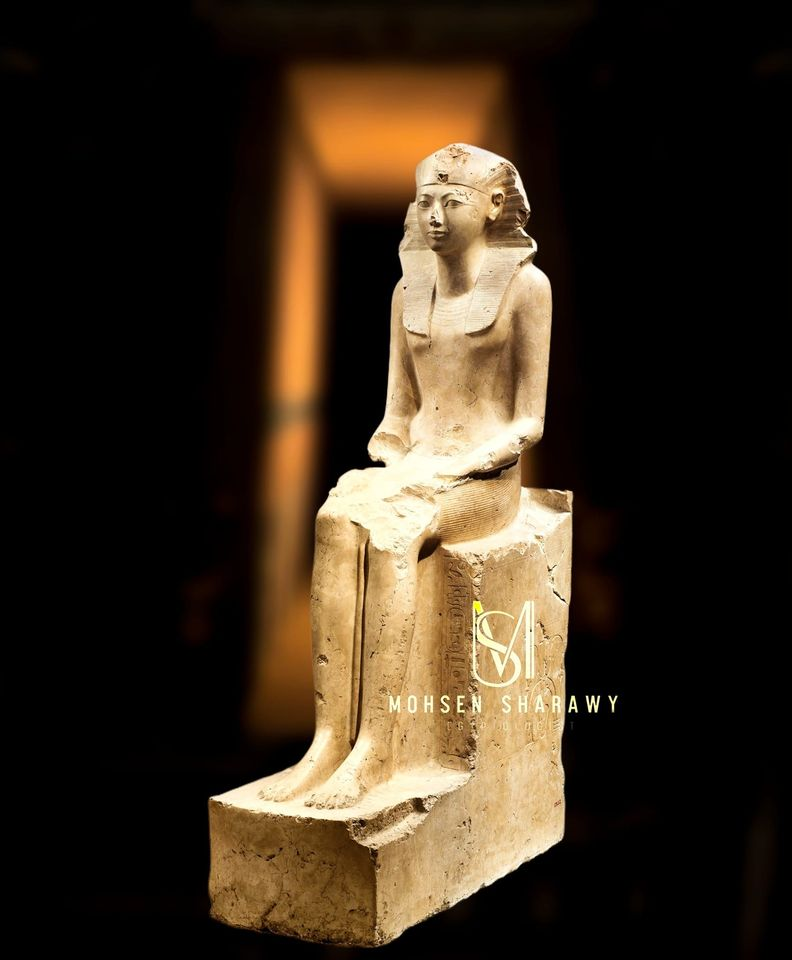?How was Hatshepsut depicted as a woman in her seated statue

The sheep of Amun or Hatshepsut, that is, Amun’s favorite concubine among women, or Amun’s concubine, the jewel of princesses. The most prominent and influential queens who ruled Egypt. Her rule was a prominent point not only in the history of the Eighteenth Dynasty, but also in the entire history of ancient Egypt.
This statue is one of the rarest statues that shows Hatshepsut, the famous Pharaonic queen, in a clearly female form. He wears a mongoose headdress and a shendite kilt, the traditional symbols of royalty for the pharaohs. However, her facial and body features indicate that she is a woman, and she does not try to hide it. She also carries feminine royal titles on both sides of the throne. Some hieroglyphs and the mongoose headdress show traces of blue and yellow dyes. , indicating that the statue was brightly decorated in the past.
Researchers believe that this statue was part of a group of statues depicting Hatshepsut in a more feminine form, which were located in special places within her temple at Deir el-Bahri. These statues may have been used to make offerings to Hatshepsut as a goddess, or to show her human and sensitive side. This statue reflects Hatshepsut sitting on her throne with dignity and calm, receiving the appreciation of her people and the admiration of history.
Her origin and family history
Hatshepsut's head wearing the North and South Crown in the Metropolitan Museum
Amun Hatshepsut, an ancient Egyptian ruling queen, was the fifth in the line of kings of the Eighteenth Dynasty. She ruled after the death of her husband, King Thutmose II, as regent for the young king Thutmose III at first, then as queen and daughter of the god Amun, after she published a story that she inscribed in her temple in Deir el-Bahri, saying that she was As a result of an intimate meeting between Amun and her mother, Queen Ahmose, Manetho mixed up its ranking and placed it after Amenhotep I in the middle of the Eighteenth Dynasty.
Source: websites

